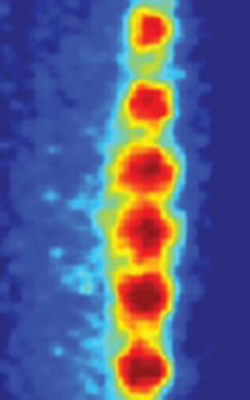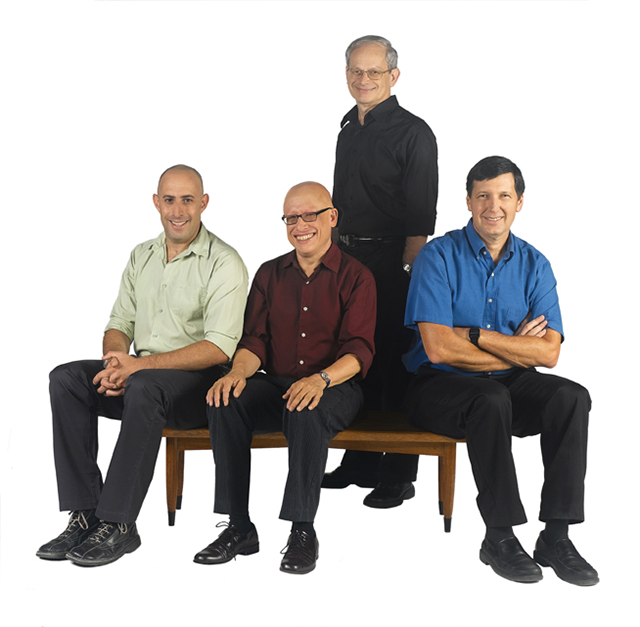
Six of eight atomic ions trappedin a quantum state in the lab of Dr. Roee Ozeri
As large objects, we’re limited to existing in one place, and one state, at a time. Quantum particles have a much more interesting existence: According to quantum theory, they can be in different places, in different states, doing different things – all at the same time.
Computers based on quantum mechanics might complete, reasonably quickly, calculations that would take today’s computers a million years. One necessary step to creating such a quantum computer is to design a switch that can be in two states at once (i.e., zero and one). Scientists in the Institute’s Faculty of Physics are on the cutting edge of this field. Prof. Ady Stern has invented a method to check whether a type of system based on the movement of composite particles – arising from the collective behavior of electrons in a magnetic field – can be one such switch, called a topological quantum switch.
And how will we overcome one of the basic tenets of quantum theory – that observation changes the results? Dr. Roee Ozeri’s advanced experimental system, one of only a few in the world, addresses this and other questions. He holds strontium ions in a special trap, in which he can “observe” them existing in two states at once.
Prof. Yaron Silberberg investigates quantum phenomena occurring between light particles (photons). His studies of entanglement between particles emitted from the same source, and of changes that take place as light passes through various materials, may lead to the development of microscopes that can focus on organelles and even molecules in living cells. Prof. Nir Davidson traps cold atoms with lasers; these might be able to store quantum information accurately for extended periods. His research could aid in the development of robust quantum communications and applications in navigation and space travel.

(l-r) Dr. Roee Ozeri, Profs. Ady Stern, Yaron Silberberg and Nir Davidson
Prof. Nir Davidson is the incumbent of the Peter and Carola Kleeman Professorial Chair of Optical Sciences.
Dr. Roee Ozeri’s research is supported by the Wolfson Family Charitable Trust; the Lord Sieff of Brimpton Memorial Fund; and David Dickstein, France.
Prof. Yaron Silberberg is Head of the Crown Photonics Center; his research is supported by the Wolfson Family Charitable Trust; and the Cymerman- Jakubskind Prize. Prof. Silberberg is the incumbent of the Harry Weinrebe Professorial Chair of Laser Physics.
Prof. Ady Stern’s research is supported by the Wolfson Family Charitable Trust.
